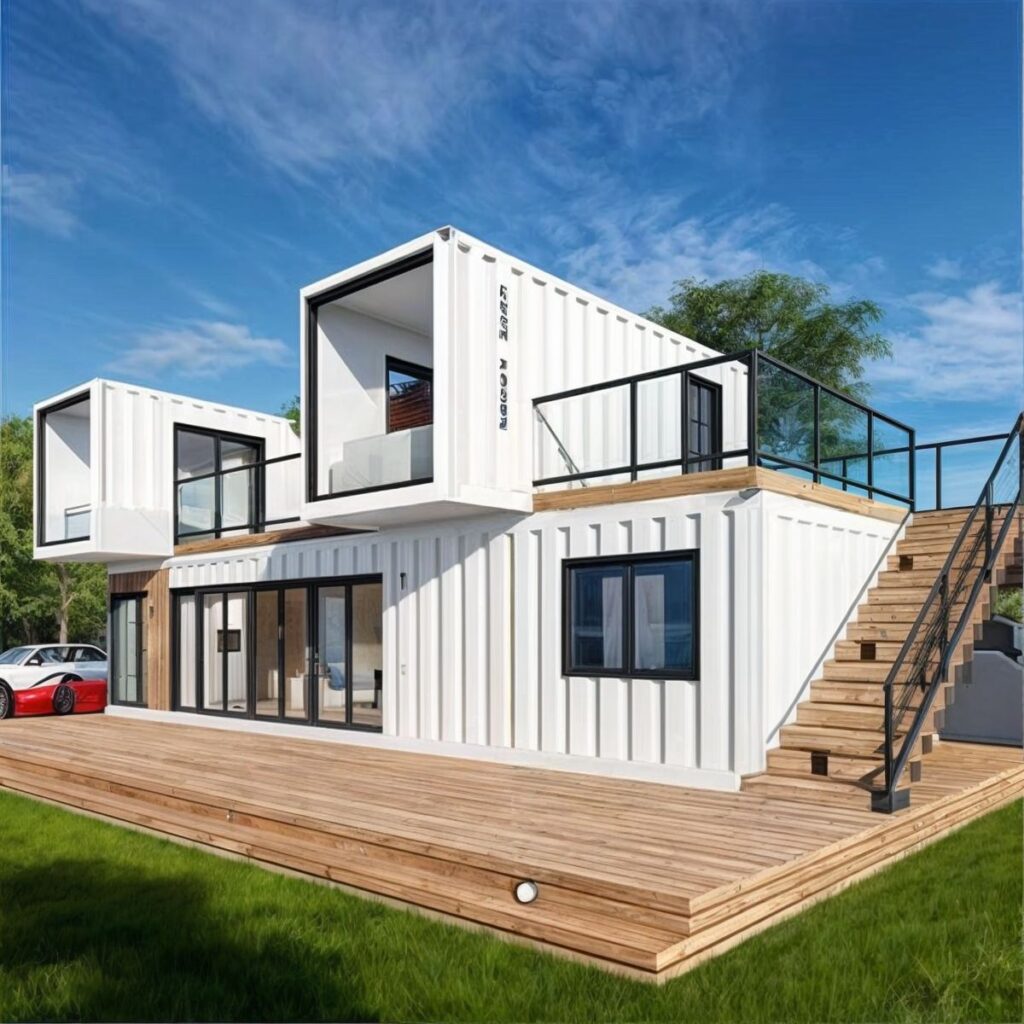
How to Build a Container Home Step by Step in 2025
Container homes are booming in 2025, and it’s easy to see why: they’re affordable, sustainable, and let you design a modern space that’s all your own. Whether you’re dreaming of a cozy retreat or a full-time residence, this updated step-by-step guide will walk you through building a container home with the latest tools and trends. Let’s get started!

Step 1: Set Your Goals and Do Your Homework
Building a container home starts with a clear plan. Here’s how to kick things off:
-
- Define Your Purpose: Are you creating a primary home, a vacation getaway, or a rental property? Your goal shapes everything from size to budget.
-
- Set a Budget: Plan for $20,000-$50,000 for a basic build, but add a 10-15% buffer for surprises like shipping delays or site prep.
-
- Check Local Rules: Zoning laws in 2025 are more container-friendly, but they vary by state. For example, California loves tiny homes, while rural Texas might have stricter codes. Use online tools like ZoningCheck or call your local office.
-
- Follow Trends: Americans are obsessed with eco-friendly living—think solar panels and smart tech. Plan these in from the start to save money later.
Step 2: Pick the Perfect Container
Your container is the foundation of your home, so choose wisely.
-
- Size Matters: Go for a 20ft container (160 sq ft) for a compact build or a 40ft one (320 sq ft) for more room. High-cube options give you an extra foot of ceiling height—perfect for tall folks!
-
- Inspect Carefully: Buy “one-trip” containers—they’ve only shipped once and are in top shape. Look out for rust, dents, or chemical smells from past cargo.
-
- Go Green: In 2025, suppliers like Container One offer certified eco-friendly options. Shop local to cut shipping costs (around $1,000-$2,000 cross-country).
Step 3: Design Your Dream Layout
This is where your vision comes to life.
-
- Sketch It Out: Use free 3D tools like SketchUp to map your layout. Focus on flow—open kitchens and big windows are hot in the U.S. right now.
-
- Add Smart Features: Plan for smart lighting or a Nest thermostat. Americans love tech that saves time and energy.
-
- Get Expert Input: Not a design pro? Hire an architect with container home experience (around $500-$1,500) to nail the structure.
Step 4: Prep Your Site
A solid site sets you up for success.
-
- Pick the Spot: Look for flat land with utility access and good drainage. Avoid flood zones—check FEMA maps for peace of mind.
-
- Level the Ground: Clear rocks and roots, then level it with a rented compactor ($50/day). Test soil if you’re in a wet area.
-
- Lay the Foundation: Concrete slabs ($3,000-$5,000) are popular, but piers ($1,000-$2,000) work for uneven land.
Step 5: Modify Your Container
Time to turn a metal box into a home.
-
- Cut Openings: Mark spots for windows and doors, then use a plasma cutter (rent for $100/day) for clean cuts.
-
- Reinforce It: Weld steel beams around cutouts to keep the frame strong—don’t skip this!
-
- Insulate Smart: Sandblast rust away, then coat with rust-proof paint. Use spray foam or aerogel insulation (R-value up to 20) for efficiency.
Step 6: Assemble Your Home
Now, put it all together.
-
- Place the Containers: Rent a crane ($200-$500) to position them on the foundation. Bolt or weld them in place.
-
- Seal It Up: Use weatherproof caulk on seams to keep out rain—critical in stormy U.S. regions.
-
- Connect Units: If using multiple containers, cut and frame doorways between them.
Step 7: Hook Up Utilities
Make your home livable with these essentials.
-
- Plumbing: Set up water lines and a septic tank ($2,000-$5,000). DIY with PEX pipes to save cash.
-
- Electrical: Wire for lights and outlets—add solar-ready circuits for future upgrades.
-
- HVAC: Install a mini-split AC/heater ($1,000-$2,000) suited to your climate.
-
- Smart Tech: Add a smart thermostat or security cams for that modern American vibe.
Step 8: Finish Inside and Out
Here’s where it starts feeling like home.
-
- Walls & Floors: Go with bamboo flooring or reclaimed wood—eco-friendly and trendy in the U.S.
-
- Furnish It: Pick multi-use furniture (think Murphy beds) to max out small spaces.
-
- Exterior Touches: Paint with UV-resistant coatings and add a small deck or plants for curb appeal.
Step 9: Get It Approved
Don’t skip the legal stuff.
-
- Inspection: Hire a pro ($200-$500) to check electrical, plumbing, and safety codes.
-
- Permits: Secure your occupancy permit—costs vary by state but expect $100-$1,000.
Step 10: Move In and Enjoy
You’ve earned it!
-
- Personalize: Hang art or add a cozy rug to make it yours.
-
- Live Green: Use energy-efficient appliances to cut bills and your carbon footprint.
Need a Head Start? Try This Resource
Building a container home in 2025 is easier than ever, but planning can still be tricky. That’s why I love Build a Container Home—a detailed guide that walks you through every step, from picking containers to final finishes. It’s packed with layouts, cost breakdowns, and tips I wish I’d had when I started. Want to save time and avoid rookie mistakes? Check it out here and see if it’s right for you!
